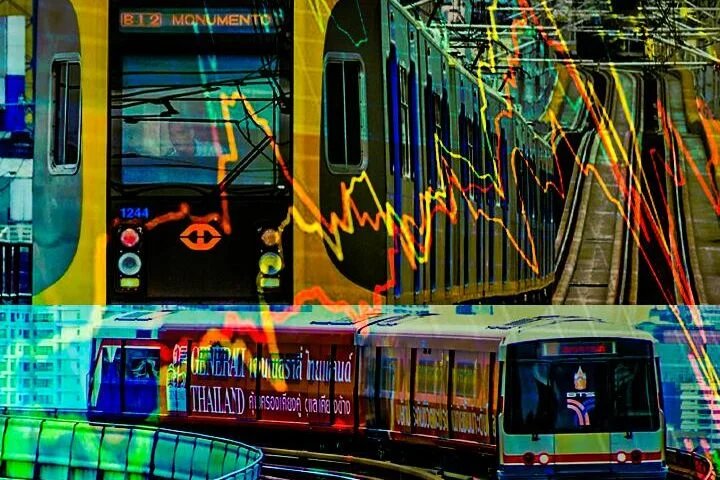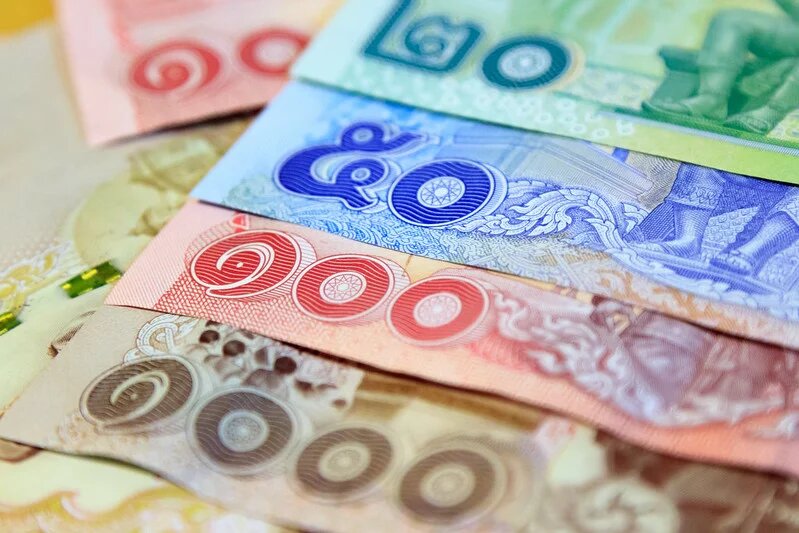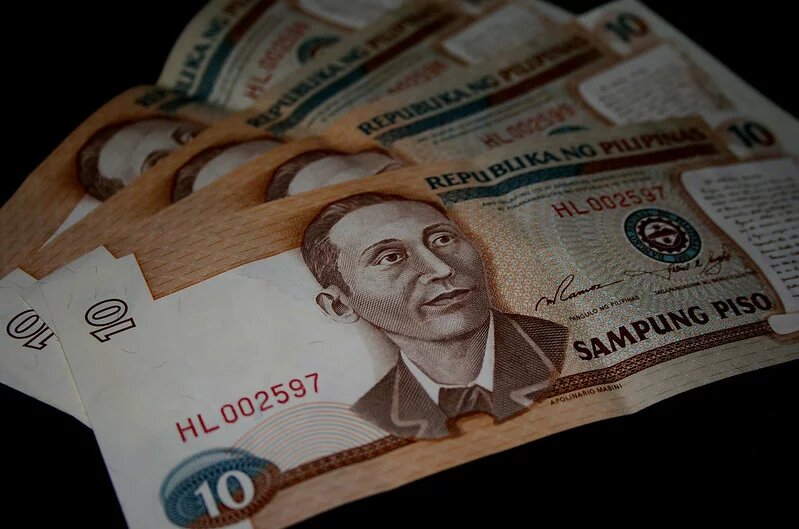
At the height of the COVID-19 pandemic in March 2020, the global community anticipated a recession as a result of industry closures. However, COVID-19 has only been one of many factors contributing to a wider economic slowdown of late. Thailand and the Philippines have both recorded rising inflation, but are on divergent paths in managing it for their populations.

With Russia’s invasion of Ukraine on 24 February 2022, an economic chain reaction sent many parts of the world into a tailspin. The Russian-Ukraine war has disrupted exports such as metals, wheat, oil and gas, resulting in a shortage. Fuel price increases have been felt not only in Europe, but also in Southeast Asian countries such as Thailand and the Philippines. The high demand for fuel with low supply drives the massive increase in the prices of goods and services.
Despite global inflation, some countries, like Thailand, an upper-middle-income country, are coping, whereas low-income and lower-middle-income countries, such as the Philippines, are feeling the devastating effects of inflation, particularly by daily wage earners and main family breadwinners.
A big word: inflation
In Thailand, we have barely felt the effects of inflation in the last ten years. Basic commodities such as rice, sugar, salt, flour, and vegetables have stable prices. Transportation costs in the provinces, like Nakhon Ratchasima where I am based, increased from THB 8 to THB 10 which is a two-baht hike since 2013. However, based on historical data, this year has seen the steepest increase in consumer prices since July 2008. In August 2022, Thailand's annual inflation rate increased to 7.86%. This is the worst in 14 years. The Thai baht fell to 36.42 against the US dollar. The increased in the price of basic commodities, power consumption, fuel, tuition fees in universities and other expenses affect the basic wage earners in Thailand despite the government’s support and wage hike.
Inflation is a big word. However, we can tell that there has been inflation when PHP 1,000 (or THB 1,000 in my case) cannot buy as much as it did in the past.
A common parameter used to measure inflation is the Consumer Price Index (CPI). It measures the price of a 'typical basket' of goods that people buy on a regular basis, and measures the inflation for the year based on the price of those goods. From a base index of 100, the CPI for the Philippines is 116.3 for the month of August 2022 whilst in the same month Thailand’s was 107.41. Comparing the two, I could theoretically buy more goods with baht compared with the peso.
Inflation is the increase in the cost of goods and services. When the price of goods rises, the currency's purchasing power in an economy falls. Prices will soar as a result of an increase in cash flow brought on by government lending and spending, coupled with a high demand for consumer goods and services and a relative lack of supply.
While most people view inflation as a negative, low inflation is a sign of a strong economy. Most economies set a target inflation rate to keep money flowing by gradually raising prices to keep up with consumer spending. To help producers meet rising demand, gradual price increases are required. Inflation should be around 2%. According to the US Federal Reserve if inflation is too low, the economy risks deflation, which means that prices and possibly wages are falling on average—a phenomenon associated with extremely weak economic conditions. Having at least a low level of inflation reduces the likelihood of harmful deflation if the economy weakens.
Impact of inflation and government measures
Large inflation rates are typical in nations with sluggish economic growth and poor governance. Periods of regularly high inflation affect consumer psyche, where people practically buy-out certain goods in large amounts due to the uncertainty of another possible inflation causing prices to increase more.
Simply put, people will hesitate to spend money when interest rates are high, which will reduce demand for goods and services.
Currency depreciation is also caused by inflation. An economy with a highly depreciated currency also suffers from high import costs because more of that currency is required for purchase. In extreme cases, high inflation causes the value of real savings to plummet (and sometimes become useless) because this money does not grow in value like assets. Retirees and people living in poverty will be adversely affected by this. Due to an increase in the value of their assets, this will cause a redistribution of wealth among the middle- and lower-income classes, with the majority of wealth being unequally skewed towards higher-income classes.
To mitigate the effects of inflation, central banks raise interest rates for consumers and borrowers. Simply put, people will hesitate to spend money when interest rates are high, which will reduce demand for goods and services. Prices may not fall suddenly, but it does slow inflation.
The people’s experiences
Ordinary people – daily wage earners such as small and micro-scale sellers, ordinary workers, teachers, and Overseas Filipino Workers (OFW) – often interpret the idea of inflation differently.
A drop in the peso means a higher exchange rate for an OFW's remittance. In June 2022, the peso closed at 54.98 to the dollar. OFWs responded positively on social media. However, the depreciation of the peso results in fewer goods to buy due to the increase in price of commodities and services. These include hikes in transportation, communication, and energy consumption.
In the Philippines, despite the PHP 33 increase bringing the daily wage to PHP 570 for non-agriculture sector workers and PHP 533 for agriculture workers (before taxes) in the National Capital Region (Metro Manila), this is a barely sustainable living.
Ms Sheryl Alapad, a Filipino financial advisor based in Manila, says that a PHP 30,000 salary per month is now similar to PHP15,000. At the time of writing, the peso to dollar exchange rate was PHP 58.50, the highest since October 2004 at PHP 57.345 to a dollar during the peak of the fiscal crisis with President Gloria Macapagal-Arroyo’s administration.
Earning at least PHP 25,000 a month, even with a rice allowance from the Local Government Unit, Mr Jericho Tavera, a teacher in Quezon City, says that it could barely last a single earner with a family of five.
Farmers and fishermen are also feeling the domino effect of rising fuel prices. Mr Jet Orbida, a farmer in Negros Occidental, feels the inflation despite raising his own foods such as poultry, pork, vegetables, and rice. “Fisherfolks use motorized boats to catch fish. So, they have to sell them at a much higher price compared with the previous months,” he explains, noting the impact of higher fuel costs.
Farmers do not benefit from rising prices because brokers set them. Despite the absurdly low prices of vegetables, which are attributed to overproduction, the majority of people still cannot afford to purchase them.
Orbida's advocacy aims to reduce farmers' reliance on commercially sold farm inputs such as fertilizers. These can be produced by farmers using animal manure, rice stalks, and other farm waste. Although radical, freedom from capitalist control over food production could provide enough food for Filipinos, he claims.
In June 2022, the Philippines hit 6.1% inflation rate. President Ferdinand Marcos Jr, the son of the deposed dictator, “disagreed with that number”. Notably, during the dictatorship of the elder Marcos, the Philippines reached the highest inflation rate of 40% and have reached 49.8% to 50.3% in 1984 due to massive debt, cronyism and massive spending.
Marcos Jr.'s campaign promise to reduce rice prices to PHP 21 per kilogram is far from reality. The cheapest regular well-milled rice costs nearly PHP 40/kg, (approximately USD 0.75) and may rise by up to PHP 6 per kilogram by the end of 2022. Marcos Jr. also appointed himself as the Agriculture Secretary.
The Philippines joined the World Trade Organization in 1995, hoping to benefit from its agricultural sector sales. However, the opposite occurred, worsening food insecurity.
Sugar's skyrocketing price is blamed for a lack of local supply, amid a debate over artificial scarcity caused by hoarding. White refined sugar costs between PHP 86 and PHP 126. As a result, the government may import 150,000 metric tons of sugar but made no mention of where it has come from.
The Philippines is barely able to feed its over 112 million citizens. Ironically, this predominantly agricultural country now relies on food imports like rice, garlic and onions from neighboring Asian countries such as Thailand, Vietnam, and Taiwan. The Philippines joined the World Trade Organization in 1995, hoping to benefit from its agricultural sector sales. However, the opposite occurred, worsening food insecurity.
A tale of two rates of inflation
The Philippines' inflation rate in August was 6.3%, which is relatively low when compared to Thailand’s 7.86%.
But based solely on inflation and currency exchange rates, the two countries are at opposite ends of the spectrum. Each government has precautionary measures in place to reduce the burden on consumers. Thailand has strict price controls on commodities and services such as electricity and communication. The weakening of the Thai baht is also beneficial to tourism. Tourists are enticed to stay longer and spend more money. Many businesses and tourists complained about the lower exchange rate when the baht was at its peak of 30.22 to the dollar.
Thailand’s top economic drivers are exports and tourism. The country has robust industrial and manufacturing zones. Thailand provides support measures totaling THB 27.4 billion ($748.23 million) to mitigate the effects of inflation. The September-October measures include THB 21.2 billion for 26.5 million people, or about THB 800 baht, under an existing scheme aimed at supporting consumer purchasing power. Thailand's roughly 70 million people can be assured of adequate food supplies and government assistance.
Marcos’ 100-days as a president does not promise anything to ease inflation. The newly elected administration seeks a USD 94.40 billion (PHP 5.29 trillion) government budget in 2023 for economic growth and addressing poverty. However, the budget allocation for healthcare is 5% and 4% for social welfare. The biggest allocation is the education sector led by Vice President Sara Duterte, with 16%.
With no immediate response from the government, an ordinary Filipino can only see empty promises, hoping that it would fill their family’s stomachs.
The views expressed in this article are not necessarily those of Heinrich Böll Stiftung.
This article was first published here: th.boell.org



